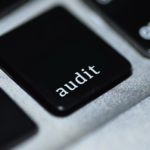The audit execution stage(or so called “Field Work”) is a critical phase in the audit engagement process, following the planning phase. During this stage, auditors perform substantive testing, evaluate internal controls, and gather sufficient audit evidence to form an opinion on the financial statements’ fairness and compliance with accounting principles. The primary objective of the audit execution stage is to ensure the accuracy, completeness, and reliability of the financial information presented by the audited entity. This part will delve into the key components of the audit execution stage, the methods and techniques used by auditors, and the challenges they may encounter during the process.
Key Components of the Audit Execution Stage
- Substantive Testing:
Substantive testing involves the detailed examination of transactions, account balances, and disclosures in the financial statements. Auditors use substantive procedures to detect material misstatements, fraud, errors, or omissions that could impact the financial statement’s accuracy. The two main types of substantive testing are:
- Test of Details: Auditors select a sample of transactions or items from the financial records and perform detailed testing on them. This could include inspecting supporting documentation, confirming balances with third parties, or performing calculations to verify accuracy.
- Analytical Procedures: These procedures involve the analysis of financial data to identify unusual or unexpected trends, relationships, or fluctuations that might indicate potential issues. Analytical procedures are a powerful tool for identifying areas that require further investigation.
- Evaluation of Internal Controls:
Auditors assess the design and operating effectiveness of the client’s internal controls during the audit execution stage. Effective internal controls help prevent and detect material misstatements in financial reporting. This evaluation helps auditors determine the extent to which they can rely on the client’s internal controls as part of their audit approach. When significant control weaknesses are identified, auditors may need to modify their testing approach accordingly.
- Audit Evidence Accumulation:
The audit execution stage requires auditors to gather sufficient and appropriate audit evidence to support their findings and conclusions. Audit evidence can take various forms, including physical documents, electronic records, confirmations, and representations from management. The quality and quantity of audit evidence play a crucial role in the auditor’s ability to form a well-substantiated opinion.
- Communication and Coordination:
Throughout the execution stage, effective communication and coordination are vital. Auditors need to maintain an open line of communication with management, board members, and audit committee members to address any emerging issues, discuss progress, and seek additional information when necessary. Regular team meetings and updates ensure the smooth flow of the audit process and help address any challenges that may arise.
Methods and Techniques Used in the Audit Execution Stage
- Sampling Techniques:
Auditors often use sampling techniques to select a representative sample of transactions or items for testing. Sampling allows auditors to draw conclusions about the entire population based on the results obtained from the selected sample. Various sampling methods, such as statistical sampling and judgmental sampling, are employed depending on the nature and size of the population being tested.
- Documentation:
Thorough documentation is a fundamental aspect of the audit execution stage. Auditors are required to record the procedures performed, evidence obtained, conclusions reached, and any significant findings. Comprehensive documentation ensures the audit is well-documented, aids in the review process, and provides a clear trail of the audit’s execution, supporting the audit report.
- Analytical Tools and Data Analytics:
Advancements in technology have revolutionized the audit execution stage. Auditors now use sophisticated analytical tools and data analytics to analyze large volumes of financial data efficiently. These tools help identify anomalies, trends, and potential risk areas, enhancing the effectiveness of substantive testing and risk assessment.
- Confirmation Procedures:
Confirmation procedures involve sending inquiries to third parties, such as customers, vendors, banks, or legal counsel, to corroborate specific information or account balances. Confirmations provide independent and objective evidence, adding credibility to the financial statements.
Challenges in the Audit Execution Stage
- Time Constraints:
The audit execution stage often faces time constraints due to regulatory reporting deadlines or other external factors. Tight timelines may limit the extent of testing or prevent auditors from addressing unexpected complexities adequately.
- Complex Transactions:
Auditing complex transactions, such as mergers and acquisitions, revenue recognition, or derivatives, can present challenges during the execution stage. Understanding the intricacies of such transactions and their accounting treatment requires specialized expertise and careful evaluation.
- Audit Evidence Limitations:
Obtaining sufficient and appropriate audit evidence can be challenging, especially in cases where records are incomplete, financial data is dispersed across various systems, or supporting documentation is not readily available.
- Resistance or Lack of Cooperation:
In some instances, management or personnel within the audited entity may resist or be uncooperative during the audit process. This resistance can impede the auditor’s access to information and make it difficult to perform substantive testing effectively.
The audit execution stage is a crucial phase in the audit engagement process, where auditors implement their planned audit procedures, assess internal controls, and accumulate sufficient audit evidence. By conducting substantive testing, evaluating internal controls, and employing various techniques and technologies, auditors aim to provide stakeholders with reliable and accurate financial information. Although the execution stage comes with challenges, auditors’ expertise, strong communication, and diligent documentation help navigate complexities and ensure a robust and well-documented audit process. A successful audit execution stage forms the basis for an auditor’s final opinion and contributes significantly to stakeholders’ confidence in the audited entity’s financial reporting.




